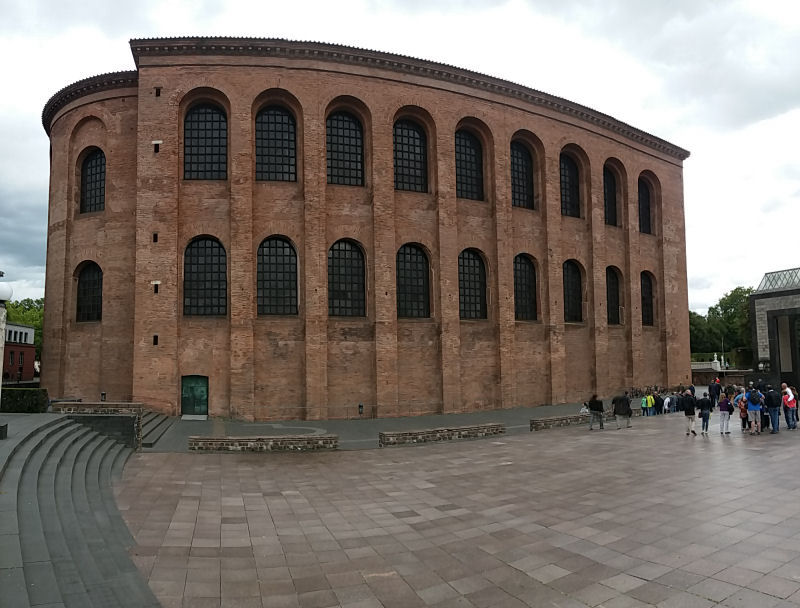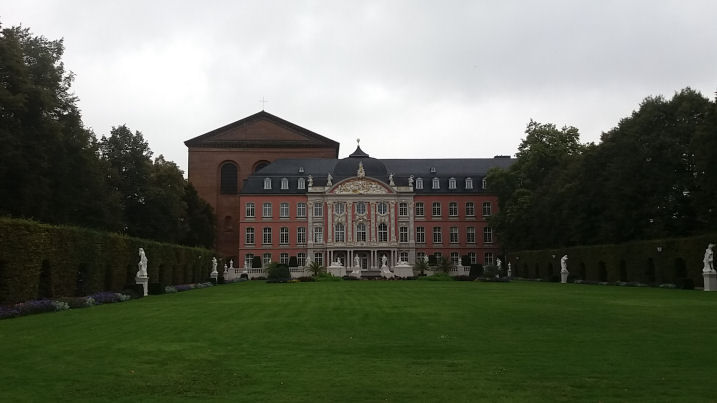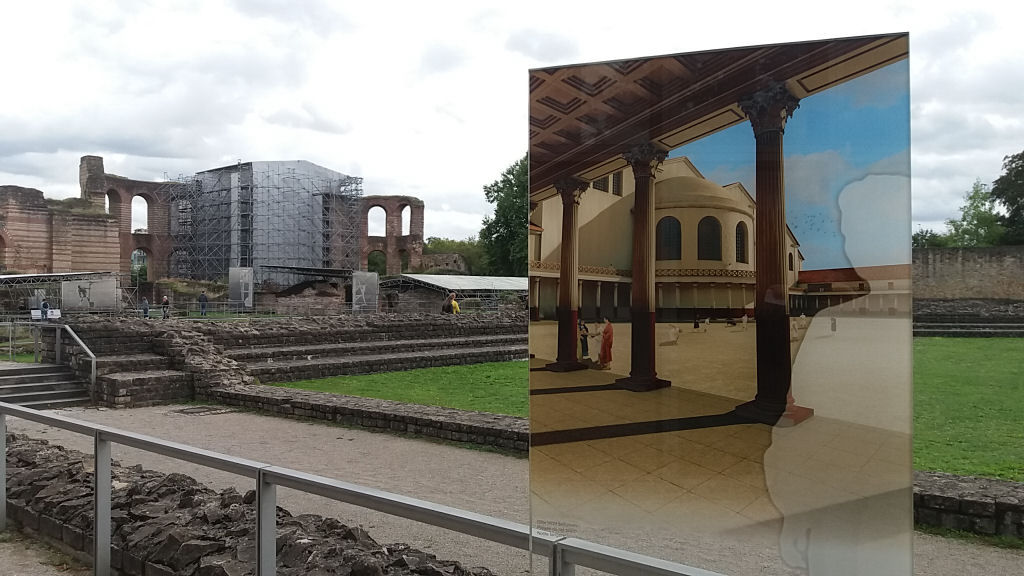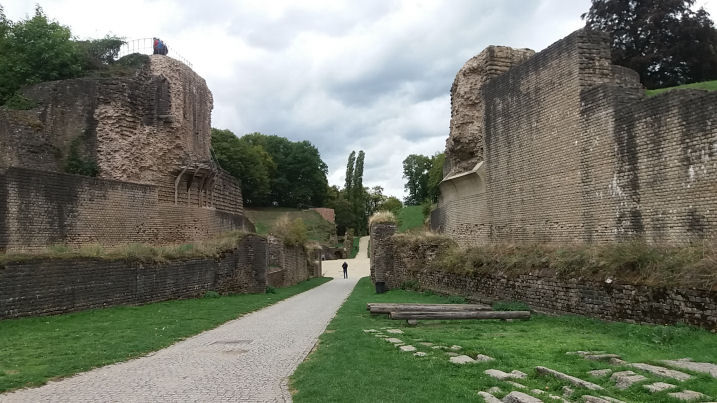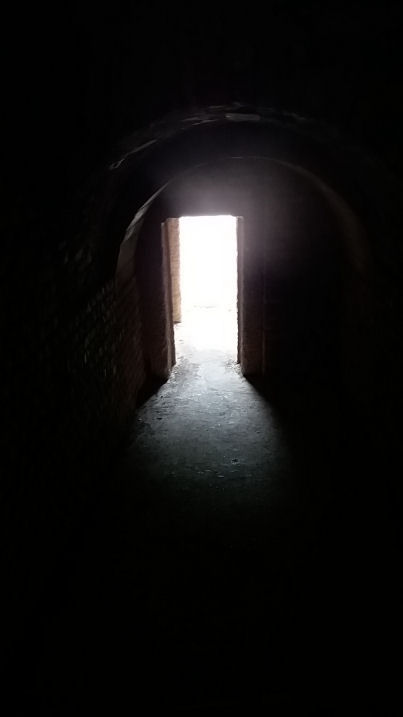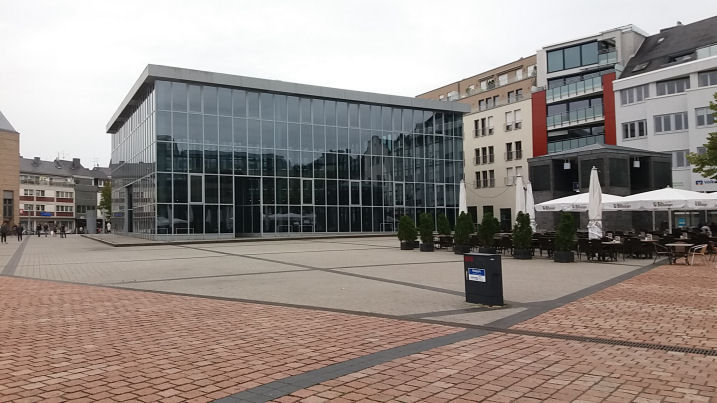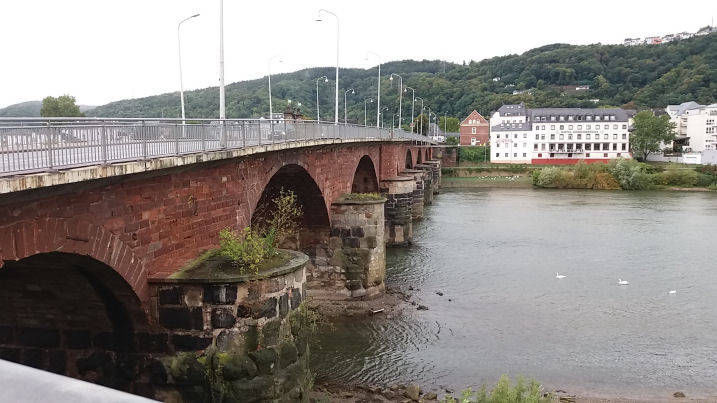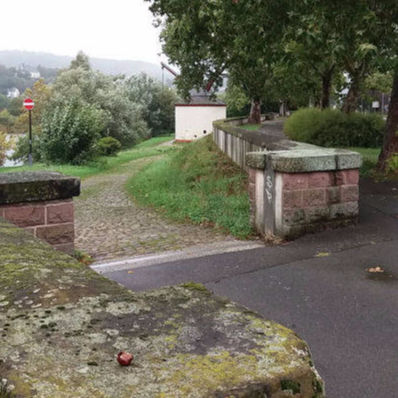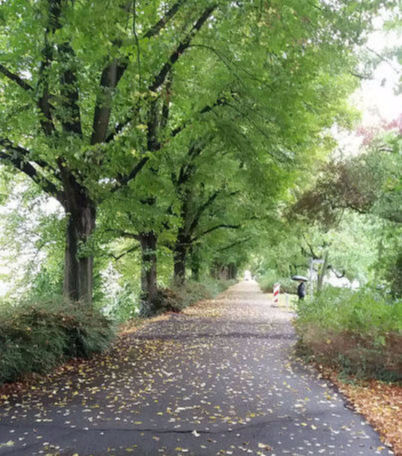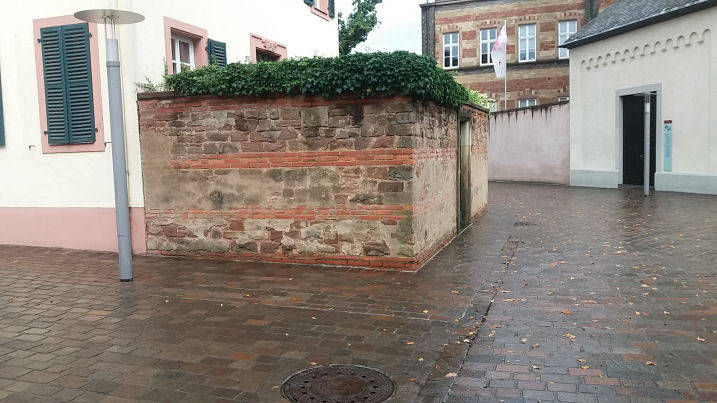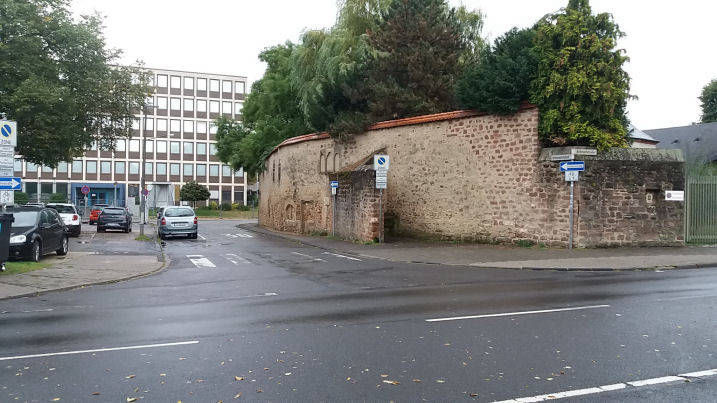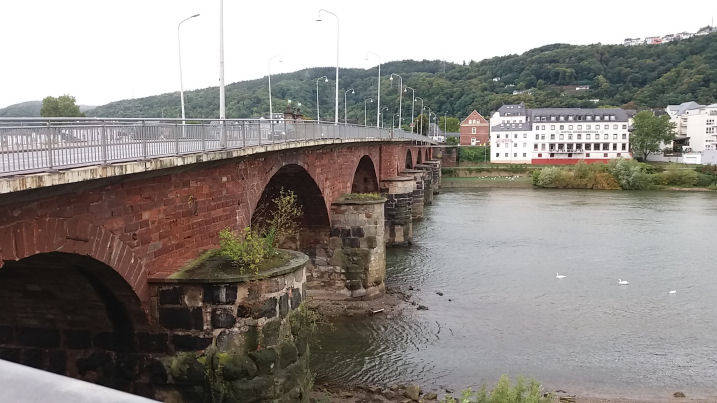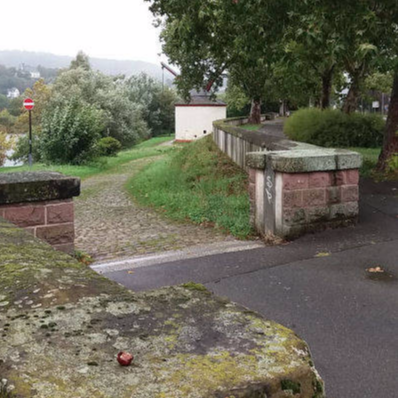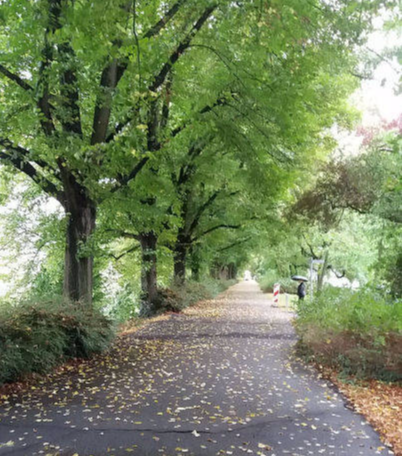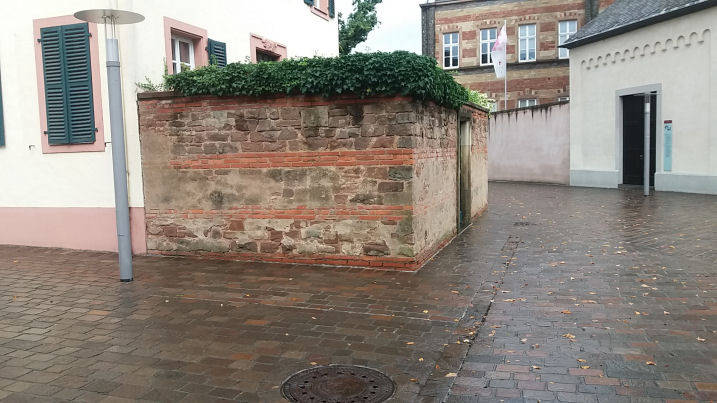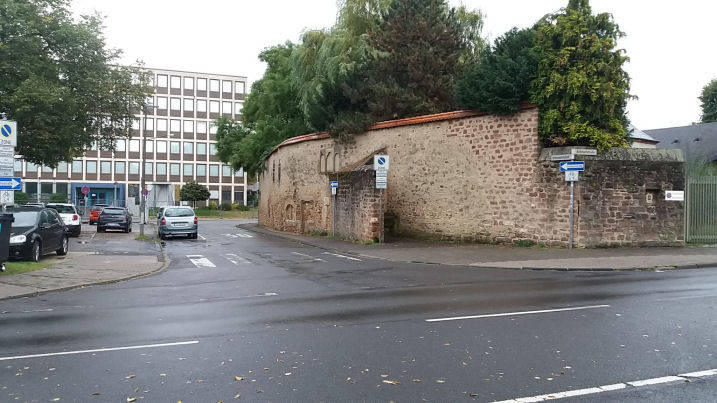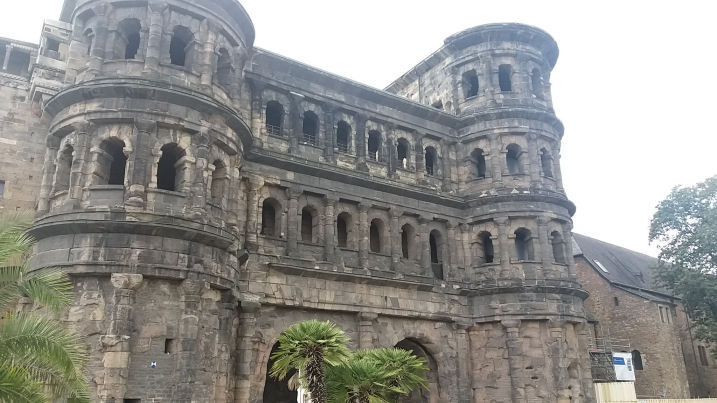
The Porta Nigra
This is by far the best preserved Roman building in Trier. Maybe one of the best preserved Roman buildings anywhere. It's a very stark, grey white lump, solidly dropped right on the northern boundary of the city. When you approached it, you knew what you were getting into. Unless you were mental, there is no way you were mistaking this for anything but a club-house for the hardest bastards in the town. The message was pretty clear.
If there was any part of Trier that would make you think you were not in Germany then this is it. It's Mediterranean architecture, all big windows and flat roofs. It must've been miserable being billeted in it during a wet northern winter. But that's Rome, do what you did everywhere else.

